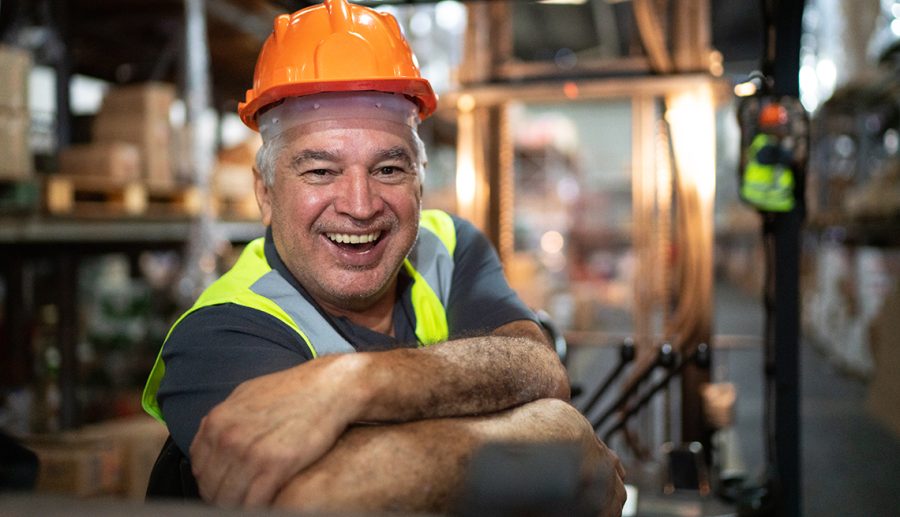How Businesses Can Benefit from an Age-Inclusive Workforce
The traditional workforce is undergoing a significant shift. As the global population ages, businesses are increasingly recognising the untapped potential of older workers.
Older workers bring a unique set of skills and perspectives to the workplace. Their experience often translates into a deep understanding of industry trends, customer needs, and problem-solving strategies. This knowledge can be invaluable in guiding new and early career workers and contributing to overall organisational success.
Moreover, older workers tend to exhibit qualities such as strong work ethic, loyalty, and a focus on quality. Their commitment to their roles can contribute to a positive work environment and foster a sense of stability within an organisation. Studies have shown that companies with a diverse workforce, including age diversity, tend to outperform those without diversity.
The Benefits of an Age-Diverse Workforce:
- Experience and expertise: Older workers have a wealth of experience and knowledge gained from years in the workforce. They can provide valuable insights and mentorship to younger colleagues.
- Stability and reliability: Experienced workers tend to be more reliable and committed to their jobs. They are less likely to job hop and can provide a sense of stability to the organisation.
- Improved decision-making: Years of experience allow older workers to make well-informed decisions and solve problems effectively.
- Diversity of thought: A multigenerational workforce brings together different perspectives and experiences, leading to more creative and innovative solutions.
Barriers older workers face
Harnessing the full potential of an age-diverse workforce requires a concerted effort to combat unconscious bias. Ageism, unfortunately, persists in many workplaces, hindering the recruitment and retention of older workers.
The 2023 Employing and Retaining Older Workers Survey found one in six organisations will not consider hiring people aged 65 and above while only a quarter are open to hiring those aged 65 and above ‘to a large extent’. (Australian HR Institute and the Australian Human Rights Commission, 2023.)
To create a truly inclusive environment, organisations must implement strategies to identify and eliminate age-related bias. This can be achieved through unconscious bias training for all employees, including hiring managers. Additionally, job descriptions should be carefully crafted to avoid age-specific language and focus on the essential qualifications and skills required for the role. Implementing blind hiring practices can also help mitigate age bias in the recruitment process.
Combating unconscious bias:
- Review recruitment practices: Ensure your recruitment process is free from age bias. Use blind recruitment practices where possible, and focus on skills and experience rather than age.
- Educate hiring managers: Train hiring managers on unconscious bias and how to identify and eliminate it during the hiring process.
- Promote age diversity: Publicly commit to building an age-diverse workforce and showcase the benefits of experienced employees.
Beyond hiring
Fostering an age-inclusive workplace goes beyond simply hiring older workers. It involves creating a culture where employees of all ages feel valued and respected. Offering flexible work arrangements can be particularly beneficial for older workers who may have family care responsibilities or health considerations.
Mentorship programs that pair younger and older employees can be instrumental in knowledge transfer and building cross-generational relationships. Additionally, providing opportunities for continuous learning and development can help older workers stay up-to-date with industry trends and maintain their employability.
Building an age-inclusive workplace
- Offer flexible work arrangements: Provide flexible work options such as part-time schedules, remote work, and compressed workweeks. This can be beneficial for workers of all ages, but especially for older workers who may have caregiving responsibilities or health considerations.
- Invest in training and development: Provide opportunities for all employees to learn new skills and stay up-to-date on industry trends. This can help older workers remain competitive and engaged in the workplace.
- Promote a culture of respect: Create a work environment where all employees feel valued and respected, regardless of age. This includes celebrating the contributions of older workers and fostering collaboration between generations.
By prioritising age diversity and inclusion, organisations can tap into a rich talent pool, enhance innovation, and create a more engaged and productive workforce. It’s essential to recognise that age is a diversity factor, just like gender, race, or ethnicity. By embracing an age-inclusive approach, organisations can create a more inclusive and equitable workplace while reaping the rewards of a talented and experienced workforce.
Resources:
- The Ageing Workforce Ready Project: https://awrproject.com.au/
- National Mental Health Commission: Career Transition Guide Late Career and Retirement
- Australian Human Rights Commission: Older Workers Resource Hub: https://humanrights.gov.au/olderworkers
- Good for business: Age diversity in the workplace and productivity | Promoting an Age-Inclusive Workforce: Living, Learning and Earning Longer | OECD iLibrary
To find out more about how Transitioning Well can help your organisation, check out our Late Career and Retirement resources.



